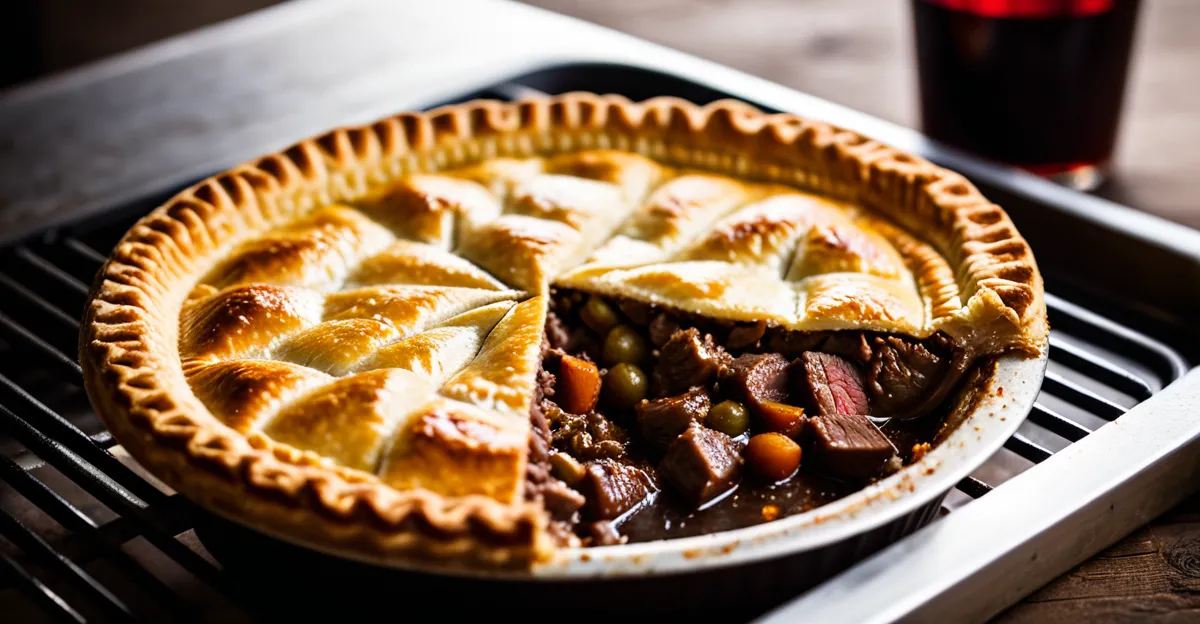Essential ingredients and choosing the right cuts
Selecting the best cuts of beef and kidney is crucial for an excellent steak and kidney pie. For tenderness and flavor, choose boneless chuck or braising steak—these cuts are well-marbled and soften beautifully during slow cooking. When it comes to kidneys, fresh lamb or beef kidneys are recommended; they should be firm, with a clean smell and no discoloration to ensure quality meat.
Freshness of ingredients plays a pivotal role. Using recently sourced, high-quality beef and kidneys not only improves texture but also enhances the pie’s overall flavor. Quality meat provides a rich depth that cannot be achieved through lower-grade alternatives.
In the same genre : How can you recreate a traditional British afternoon tea experience?
Beyond the meat, essential components like onions, garlic, and herbs such as thyme or bay leaves add layers of savoriness. A rich beef stock or a splash of Worcestershire sauce can lift the filling’s taste, while seasoning with salt and black pepper is fundamental. These ingredients harmonize to create a hearty, balanced flavor profile critical to a classic steak and kidney pie experience.
Step-by-step preparation method
Mastering the steak and kidney pie method begins with properly preparing the meat. Trim excess fat and membranes from the recommended cuts like boneless chuck or braising steak to ensure tenderness. Cut both beef and kidneys into uniform cubes to promote even cooking.
Topic to read : What Are the Unique Flavors that Define British Cuisine?
Next, use careful kitchen techniques to build flavor. Sauté the onions and garlic until translucent before adding the meat; this step creates a rich base. Browning the beef and kidneys separately enhances texture and intensifies the savory profile. Season early with salt and black pepper to layer flavors effectively throughout cooking.
After sealing the meat and vegetables, deglaze the pan with beef stock or Worcestershire sauce, allowing the flavors to combine and create a robust filling. Slow simmering will tenderize the cuts and meld essential components into a harmonious mix.
Finally, assemble the filling into the prepared pastry, distributing the steak and kidney pie ingredients evenly. This ensures every bite captures the balance of tender meat and flavorful sauce. Mastering this step-by-step guide not only produces a delicious pie but also optimizes texture and taste through purposeful preparation and seasoning.
Pastry options and assembly
Choosing the right pie pastry options is key to complementing the rich filling of a steak and kidney pie. Two popular choices are shortcrust pastry and puff pastry. Shortcrust pastry offers a sturdy, crumbly base that holds the hefty filling well, while puff pastry provides a light, flaky top that adds an appealing texture contrast.
For an ideal steak and kidney pie, many chefs recommend using shortcrust pastry for the base and sides, ensuring structural support, paired with a puff pastry lid to achieve that signature golden, flaky crust. This combination balances durability with an elegant finish.
When assembling, it’s important to seal the edges tightly to prevent the filling from leaking during baking. Pricking holes in the puff pastry lid allows steam to escape, avoiding sogginess and ensuring a crisp top. Brushing the pastry with beaten egg before baking promotes an even, glossy browning.
Professional assembly techniques include chilling the pastry before baking to preserve its texture and gently pressing the filling to distribute it evenly, resulting in a well-balanced pie with consistent bite and appealing presentation.








